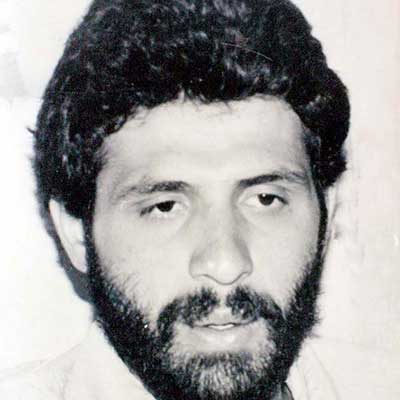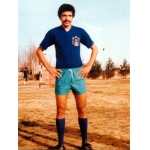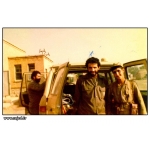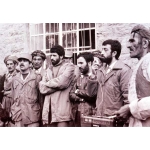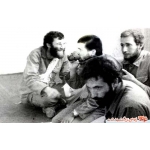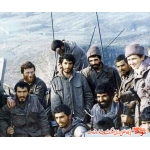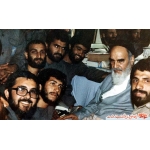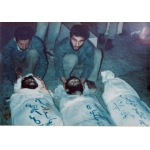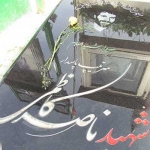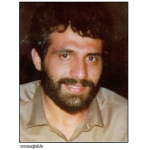Kazemi, Nasser
Zeinab Ahmadi
347 بازدید
Nasser Kazemi (1956–1982) was the commander of the Islamic Revolutionary Guard Corps (IRGC) in Paveh and Sanandaj. He attained martyrdom while clearing the Piranshahr-Sardasht road.
Nasser Kazemi was born on May 31, 1956, in Tehran. In 1974, he passed the national university entrance exam and was accepted into university to study either paramedical sciences or physical education. Eventually, he chose physical education due to personal interest.[1]
Following the Islamic Revolution, Kazemi joined the IRGC and underwent two weeks of military training at Vali Asr (as) Barracks. He was selected by Muhammad Boroujerdi to command a company at the base and was later dispatched to various missions across Tehran.
In 1979, Kazemi was deployed to Zabol for his first mission, where he helped suppress an insurgency sparked by anti-revolutionary forces in several regions, including Sistan and Baluchistan. Along with other IRGC forces, he successfully quelled the unrest. Later, he was sent to Khorramshahr to address a separatist movement attempting to divide Khuzestan. He remained there until the crisis was neutralized, after which he returned to Tehran. On November 4, 1979, his team provided security outside the U.S. Embassy in Tehran for three days following its seizure by Iranian university students.[2]
On January 7, 1980, on Muhammad Boroujerdi’s recommendation, Kazemi and a group were dispatched to Paveh to clear the region of the Democratic Party and anti-revolutionary elements, while also assisting the underprivileged population of the area.[3]
After serving as the mayor of Paveh, he was appointed commander of the IRGC forces in the city. In Paveh, he organized and mobilized local forces, believing that areas with Kurdish populations should be liberated from anti-revolutionary groups by the people themselves.
With the support of local forces (Muslim Kurdish Peshmerga) and dispatched IRGC units, he successfully cleared the Paveh-Nuriyab road, as well as the village and garrison of Qeshlaq. Afterwards, residents from surrounding deprived areas requested his help in liberating their towns. In the spring of 1980, Kazemi, backed by local people and IRGC forces, liberated Bayangan, a district of Paveh whose residents had fled to Paveh. A few months later, he launched an operation known as “Bilet” to liberate Nosoud, a city northwest of Paveh near the border. He successfully defeated the enemy in the area, but during the operation, Kazemi was injured and returned to Tehran for treatment. Nevertheless, he returned to Paveh before fully recovering to clear several strategic locations, including Kalechenar, Shamshir, Gelotangeh, Oramanat, Marsouk, and the city of Nodashe, all situated around Paveh.[4]
To liberate Nodashe, it was crucial to first capture the two key heights of Kalechenar and Koumaja. The operation was based on a plan by Colonel Shahabodin Shahbazi, a former Imperial Army officer who had taken command of a border outpost in Hoveyzeh after the Revolution. Two battalions from the Army and the IRGC, led by Kazemi, successfully captured the Kalechenar and Koumaja heights, clearing the way for the liberation of Nodashe.
In 1981, Kazemi and a group of youths from Nodashe took control of the heights of Gelotangeh, Kaveh Zahra, and Marsouk, all strategically important locations near the Shamsi Heights, Iraq’s main stronghold in the area. Kazemi realized that without controlling the Shamsi Heights, liberating Nodashe would be impossible. He devised an operation plan known as “Ruhollah” in August 1981.[5]
Initially, Iranian forces were overwhelmed by the enemy’s intense attacks, but at Kazemi’s suggestion, helicopters began searching and attacking the enemy’s main base. The helicopters launched missile strikes, forcing the enemy to surrender, and thus the Shamsi Heights were liberated.[6]
In September 1981, Muhammad Boroujerdi transferred command of the Paveh IRGC to Muhammad Ebrahim Hemmat and assigned Kazemi to command the Kurdistan IRGC, based in Sanandaj. During this time, Kazemi established the “Shuhada Battalion” to conduct liberation operations, which quickly grew into a brigade and eventually a division.[7]
Kazemi was determined to liberate all cities in the Kurdish regions. He initiated operations to clear Boukan, a city in West Azerbaijan Province, which was liberated within hours with the help of the Shuhada Brigade.
On March 19, 1982, Kazemi married Manijeh Sagharchi. They had one son, named Ali.
In April 1982, Kazemi devised a plan to clear the Baneh-Sardasht road. One battalion, led by Mustafa Tayareh, commander of the Saqqez IRGC, would launch the operation from Sardasht, while two battalions, commanded by Kazemi, would start from Baneh. Together, they successfully cleared the road and surrounding villages. After the operation, Army and gendarmerie forces were deployed to secure the position.[8]
Kazemi's final operation was aimed at clearing the Piranshahr-Sardasht road along the Iraq border. He carried out this mission with IRGC forces and Muslim Kurdish Peshmerga fighters. On August 28, 1982, during the operation to liberate the Piranshahr-Sardasht road, Kazemi was martyred in the village of Mamincheh, near Piranshahr, after a bullet struck his forehead.[9]
[1] Unnamed, Kurdistan, the people, and guard of martyr Nasser Kazemi, Unplaced: Islamic Revolutionary Guard Corps of Kurdistan provice, 1362, pp. 6-9.
[2] Shahed Yaran, August 2015, No. 118, pp. 47 and 48.
[3] Kurdistan, the people and the martyr Nasser Kazemi's Guard, pp. 11 and 12.
[4] Shahed Yaran, August 2015, No. 118, pp. 111 and 115
[5] Fatahi, Hossein, Mr. Farmandar, Qom: Samir, pp. 101, 102, 114, 115
[6] Kurdistan, the people and the martyr Nasser Kazemi's Guard, pp. 75 and 79
[7] [7] Shahed Yaran, August 2015, No. 118, p. 27.
[8] Fattahi, Hossein, Mr. Governor, pp. 125-142.
[9] Kurdistan, the people and martyr's guard Naser Kazemi, pp. 21 and 22


